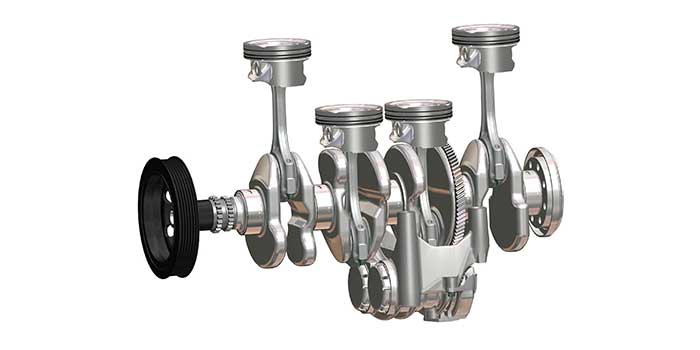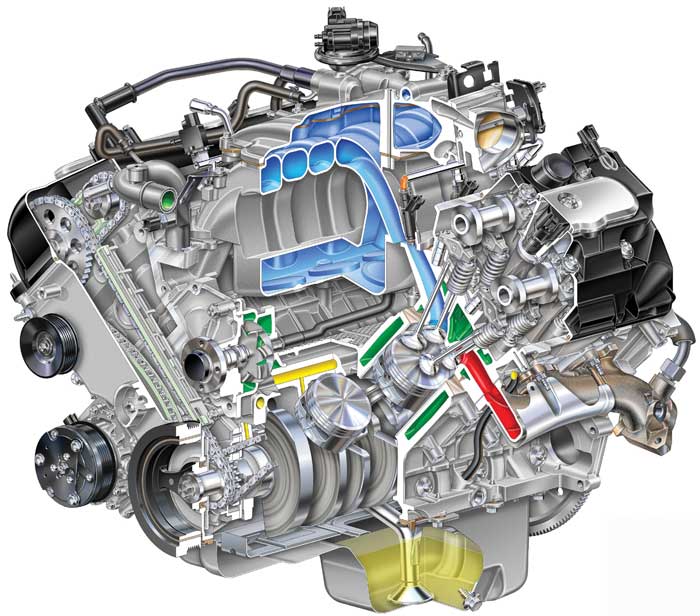Every time a cylinder fires, the crankshaft speeds up a very small amount for a short period of time. It is then slowed down as the next cylinder in the firing order compresses air and fuel for the next combustion event.
The speeding up and slowing down of the crankshaft produces torsional vibration or twisting force, which can put stress on the crankshaft and the connected components. If the stress is great enough, the crankshaft will eventually fail.
Adding mass to the crankshaft assembly is one solution for minimizing vibrations in some engines, but this approach increases rotating mass of the crank and overall weight of the vehicle. The other cure is a crankshaft pulley with a harmonic dampener/balancer.
A harmonic balancer is like a punching bag for the crankshaft. There are two basic components in a harmonic balancer: inertial mass and an energy-dissipating element. The inertial mass consists of an outer ring that could have the grooves for the belts and an inner hub that connects to the crankshaft. The outer ring contains the mass to cancel out the vibrational forces.
Between the two metal components is the energy-dissipating element, which is a rubber or elastomeric compound. This ring of rubber can cause the two metal parts to go out of phase as much as 1º to 2º as it absorbs the vibrations in the crankshaft. When the energy-dissipating element flexes, it changes the motion into heat.
On the surface, a harmonic dampener may seem simple, but tuning the unit to an engine over a specific range of rpms is complicated engineering.















